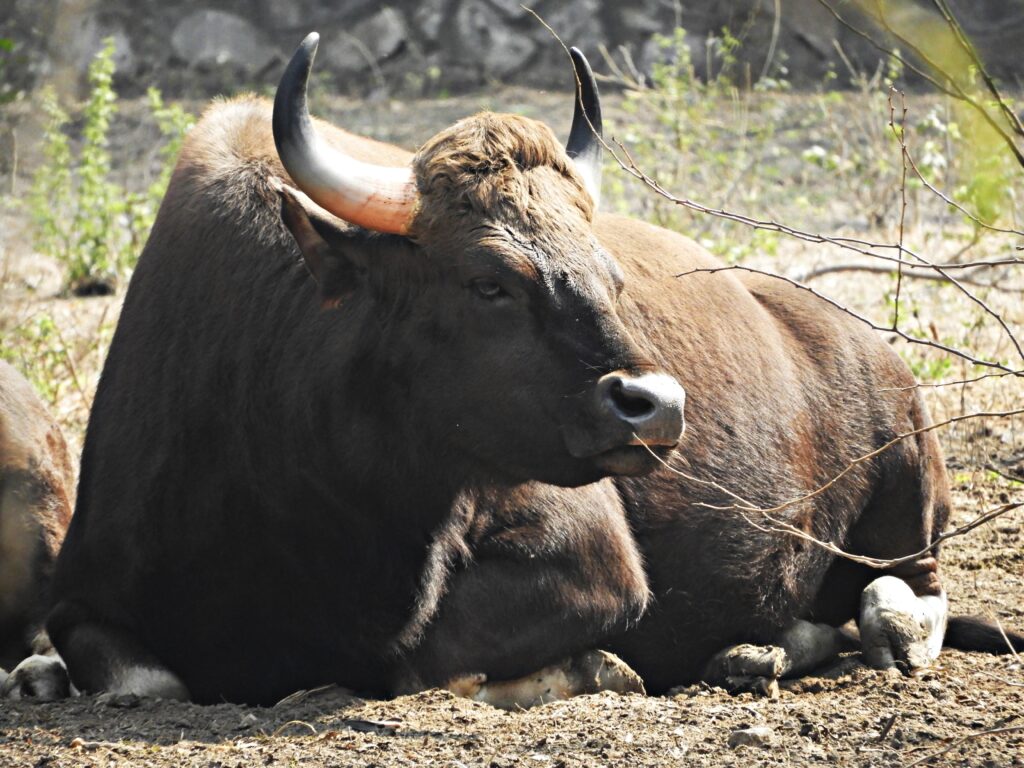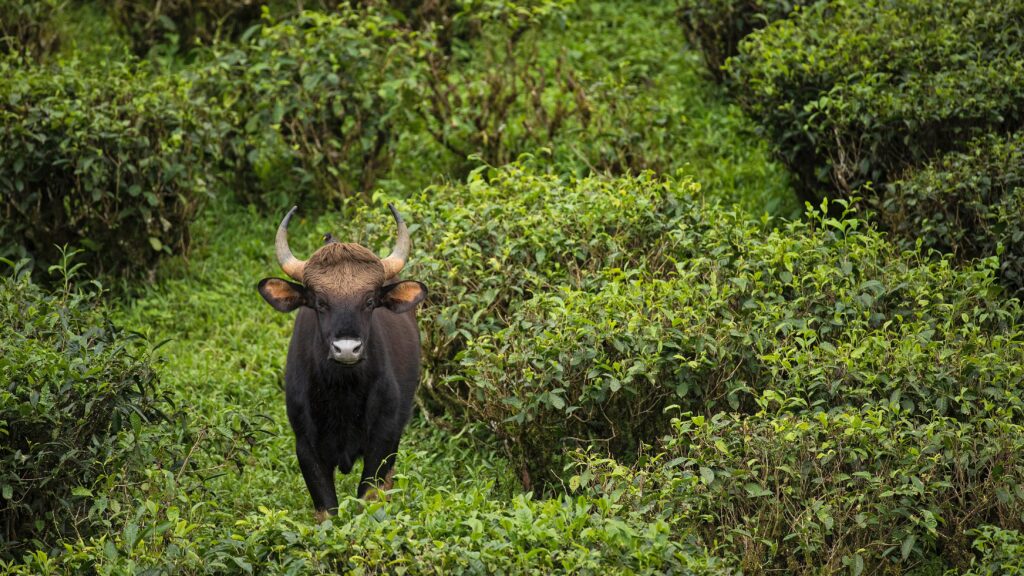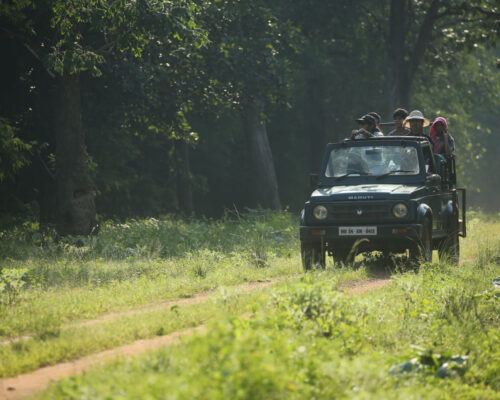The Indian Bison usually referred to as the gaur, is a breed of bovine that is indigenous to South and Southeast Asia. It has been designated as Vulnerable on the IUCN Red List since 1986. A maximum of 21,000 mature people were living in the world in 2016, with India having the most of them. In the previous three generations, its population has decreased by more than 70%, and it is now extinct in Bangladesh and probably Sri Lanka. In locations that are well-protected, the population is stable and growing. Among the Bovidae and wild cattle, it is the largest species. The Tadoba Andhari Tiger Reserve has a healthy population of Gaurs. Our resort in Tadoba is nestled among the reserve and is the ideal location for spotting the Gaurs from close proximity.
Characteristics of Gaur

The largest living bovid is the gaur. A high convex ridge on the forehead between the horns, which protrudes anteriorly and creates a deep hole in the profile of the upper part of the head, distinguishes this powerful and massively built cow. The back has a noticeable ridge. The ears are enormous. On the back, the hair gets relatively thin in older bulls. Males are dark brown, sometimes even black in very old ones. Ashy grey, occasionally dirty white, covers the top of the head from just above the eyes to the nape of the neck. The lower portion of the legs is pure white or tan, and the muzzle is a light colour. The groups who live in dry, open environments have cows and young bulls that are paler and occasionally have a rufous color. Compared to regular oxen, the tail is shorter and only reaches the hocks. The shoulders of these animals can be up to 12 cm (4.7 in) higher than the rump, and there is a prominent ridge that runs from the shoulders to the middle of the back. This ridge is brought on by the spinous processes of the vertebrae in the forepart of the trunk being significantly longer than those in the loins. The hooves are thin and pointed, and the hair is short, fine, and lustrous.
Distribution and Habitat of Gaurs
The gaur is primarily found in wet evergreen or semi-evergreen deciduous woods, while it can also be found in deciduous forest regions outside of its range. Large, generally unaltered areas of forest, steep terrain below a height of 1,500–1,800 m (4,900–5,900 ft), the presence of water, and an abundance of fodder in the form of grasses, bamboo, bushes, and trees are all elements of the gaur habitat. The previous conversion of the majority of the plains and other low-lying areas to croplands and pastures may be in part to blame for their seeming preference for steep terrain. They can be found from sea level to at least 2,800 metres in elevation (9,200 ft). The best habitat seems to be found in low-lying places.
In India, there were between 12,000 and 22,000 people living there around the middle of the 1990s. One of the largest remaining strongholds of gaurs is found in southern India’s Western Ghats and their surrounding hills, particularly in the Wayanad-Nagarhole-Mudumalai-Bandipur complex. The populations of India, Bhutan, and Bangladesh are thought to number between 23,000 and 34,000 people. There have been reports of significant populations in Nagarahole and Bandipur National Parks totaling about 2,000 individuals, over 1,000 in the Tadoba Andhari Tiger Project, 500–1000 in the Periyar Tiger Reserve and Silent Valley and neighbouring forest complexes, and over 800 in the Bhadra Wildlife Sanctuary.
Behaviour and Ecology of Gaurs

Gaur are primarily diurnal when they have not been disturbed. Due to human interference with the forest, they have generally turned nocturnal in other places. They are rarely spotted in the open after 8:00 a.m. in central India since they are most active at night. Herds gather throughout the dry season and dwell in confined spaces until spreading out towards the hills when the monsoon approaches. Even though gaur must drink water to survive, they don’t appear to bathe or wallow.
The matriarch, an elderly adult female, is in charge of gaur herds. Male adults may live alone. Unattached males roam around in quest of receptive females during the height of the breeding season. Males rarely engage in severe physical altercations, and dominance is mostly determined by size. Males emit a loud, resonant mating call that can travel more than 1.6 kilometres (1 mi). There have also been reports of Gaur producing a whistling snort, a warning call, and a low moo.
Natural Predators
Apart from humans, gaur have few natural predators due to their size and strength. Unprotected calves or sick animals are occasionally attacked by leopards, dhole packs, and huge mugger crocodiles. Adult gaurs have only ever been reported to be killed by tigers and saltwater crocodiles. However, due to both species’ dwindling ranges, the habitat and distribution of the gaur and saltwater crocodile now only sometimes cross. To successfully attack a healthy adult giraffe, a crocodile would probably need to be an adult male (more than 3.7 m or 12 ft and 300 kg or 660 lb in weight).



